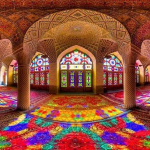The Flag of Mozambique is a powerful symbol of the nation’s struggle for liberation, its natural wealth, and its cultural heritage. After gaining independence from Portugal in 1975, Mozambique adopted three different flags before settling on its current design on May 1, 1983.
Let’s explore the meaning behind the Flag of Mozambique, its unique design, the symbolism it carries, and the pride it reflects in the hearts of its people.
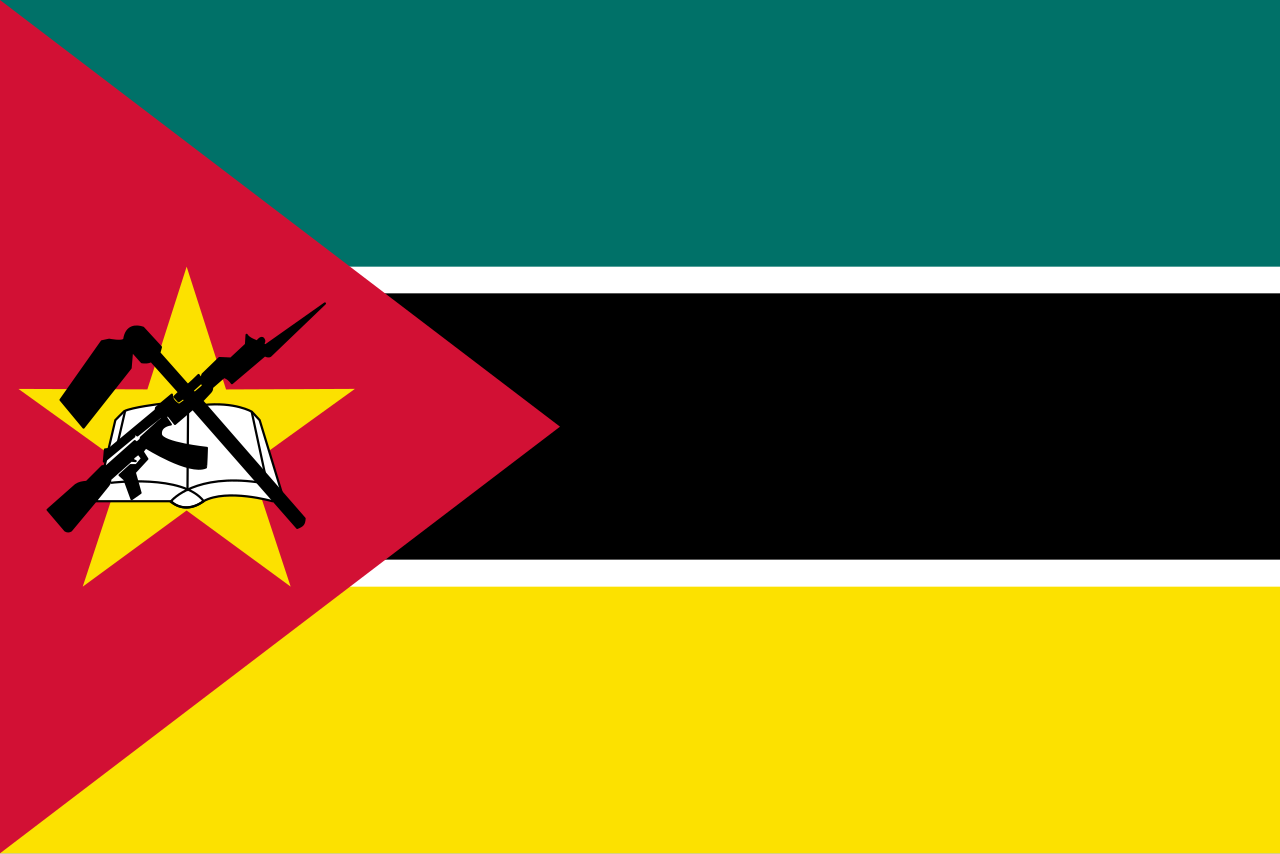
Table of Contents
THE DESIGN OF THE FLAG OF MOZAMBIQUE
At your first glimpse of the Mozambique flag, like many other African national flags, you will notice the prominent use of the Pan-African colours.
The flag features three horizontal stripes of green, black, and yellow, separated by thin white lines, with a red triangle on the left side containing a yellow five-pointed star.
However, what truly makes the flag of Mozambique stand out globally is the emblem superimposed over the yellow star – a crossed hoe and gun, placed atop a book. The gun is widely recognised as an AK-47 with a bayonet, making the Mozambique flag the only national flag in the world to feature a modern firearm.
Each element of the flag’s design has a specific meaning. The green, black, and yellow stripes represent the richness of the land, the African continent, and the country’s mineral resources, respectively. These solid-coloured stripes celebrate the Mozambican people’s deep connection to their bountiful land.
The red symbolises the centuries-long resistance against colonialism, the armed struggle for liberation, and the defence of sovereignty, while the white highlights the justice and peace of the Mozambican people’s centuries-long fight. The yellow star reflects Mozambique’s socialist past. Together, these elements emphasise the nation’s reverence for its history.
The gun, hoe, and book represent Mozambique’s commitment to self-defence, agriculture, and education, underscoring the pillars of the nation’s development.
THE HISTORY BEHIND THE MOZAMBIQUE FLAG – FRELIMO
When discussing the flag of Mozambique, the Frente de Libertação de Moçambique (Mozambique Liberation Front), commonly known as FRELIMO, is an unavoidable topic.
FRELIMO, established in 1962, was a nationalist movement dedicated to achieving self-determination and independence from Portuguese colonial rule. It became the primary force in the struggle against Portuguese colonialism.
FRELIMO maintained strong ties with socialist nations such as the Soviet Union and China, which supported national liberation movements, providing FRELIMO with aid and training to wage the war for independence.
Following the Carnation Revolution in Portugal in 1974, which ended the right-wing government of the Second Republic, FRELIMO took the lead in Mozambique’s independence negotiations and became the country’s sole legal political party. Even after the establishment of a multi-party system, FRELIMO continued to rule and has governed Mozambique from independence to the present day. The history of FRELIMO, along with its flag, has profoundly influenced the design and meaning behind Mozambique’s national flag.

THE HISTORY OF THE MOZAMBIQUE FLAG
From 1505 onwards, Mozambique became a colony of Portugal, and as such, it did not have its own flag, being represented instead by the Portuguese national flag.
In 1974, the Third Portuguese Republic ceased its support for colonial wars and signed the Lusaka Accord with FRELIMO, establishing a transitional period of joint administration before Mozambique’s formal independence. During this phase, both the Portuguese flag and FRELIMO’s flag were flown simultaneously. The flag of Mozambique at this time was nearly identical to the current design, except it lacked the star and the emblem above it.
On 25 June 1975, the anniversary of FRELIMO’s founding, the People’s Republic of Mozambique was established as a socialist state, and a new flag replaced both the Portuguese flag and FRELIMO’s old flag. This new flag featured diagonal stripes in Pan-African colours, with the emblem of a hoe, gun, and book appearing for the first time in the upper left corner. It also included a cogwheel symbolising the working class and a red star representing proletarian internationalism.
In April 1983, FRELIMO’s flag was readopted, with the addition of a yellow five-pointed star and the emblem above the triangle. By May, the cogwheel was removed. Also, the size and design of the gun, hoe, and book were revised, resulting in the current flag of Mozambique.
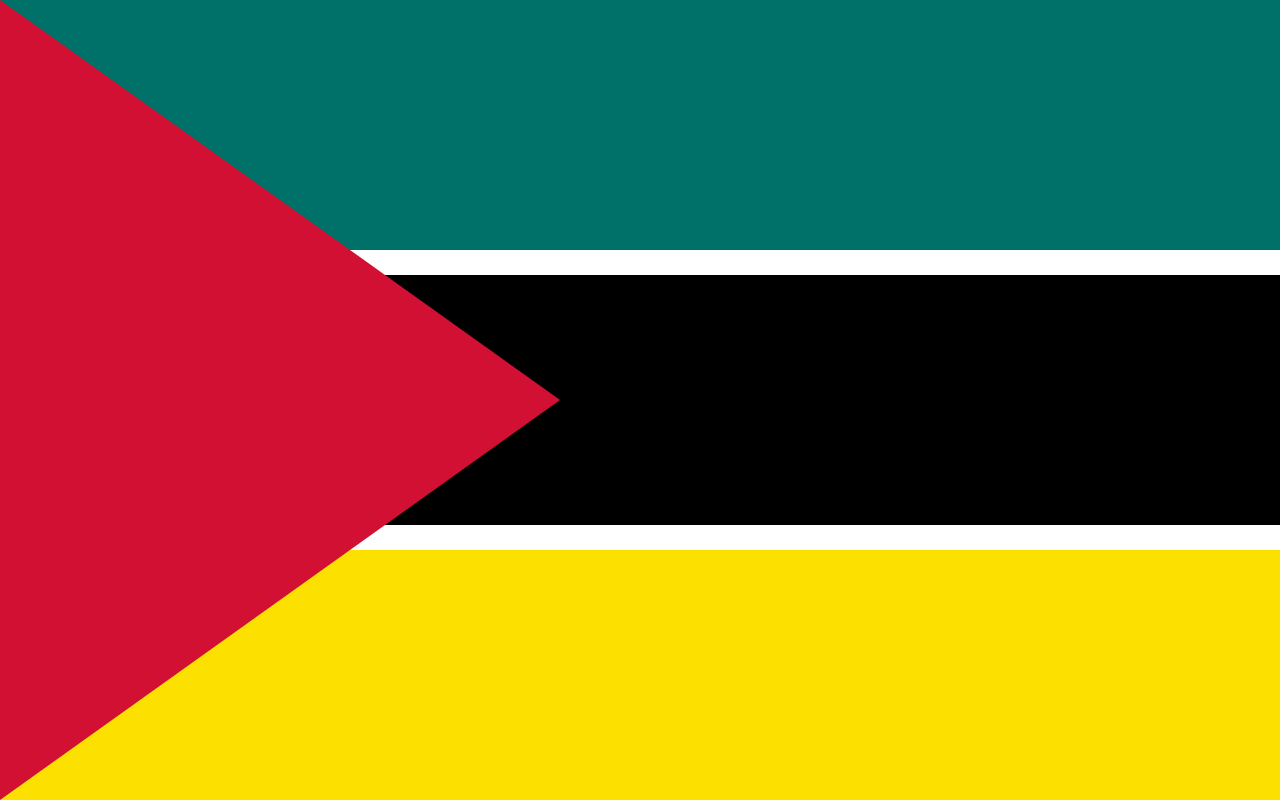
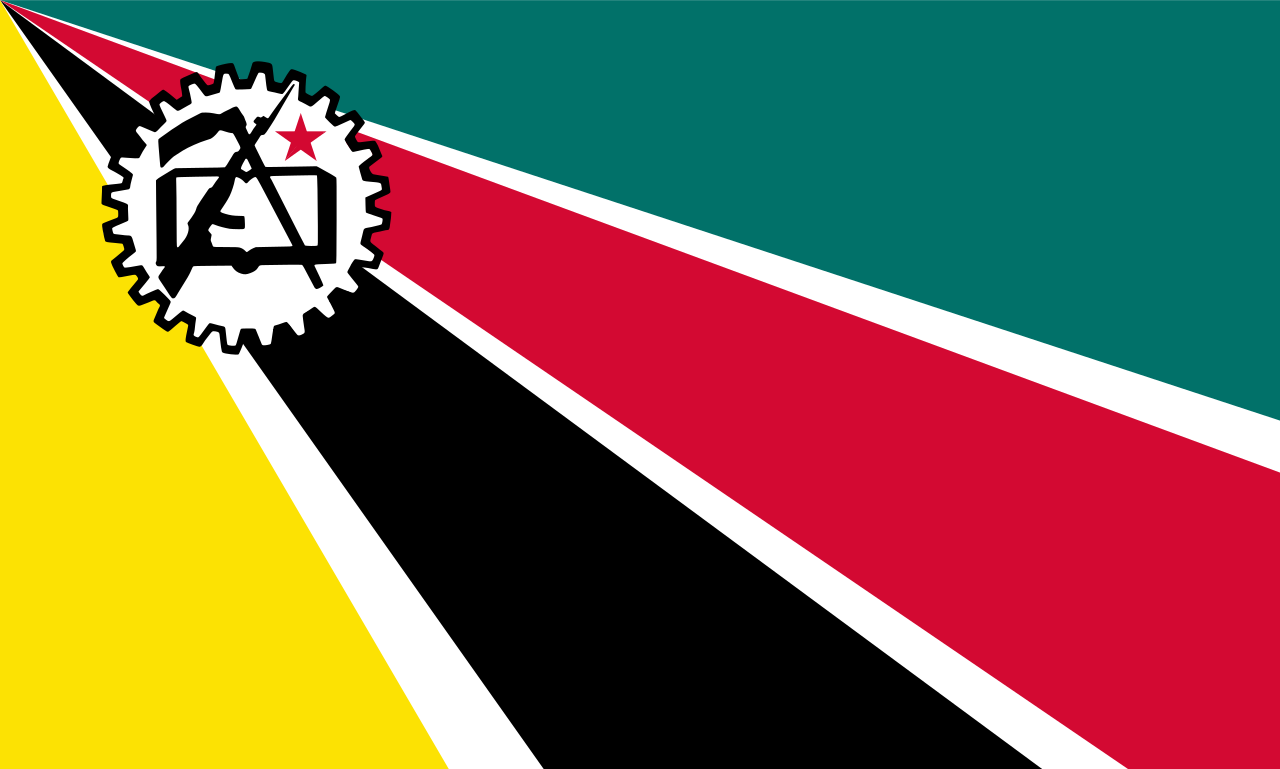
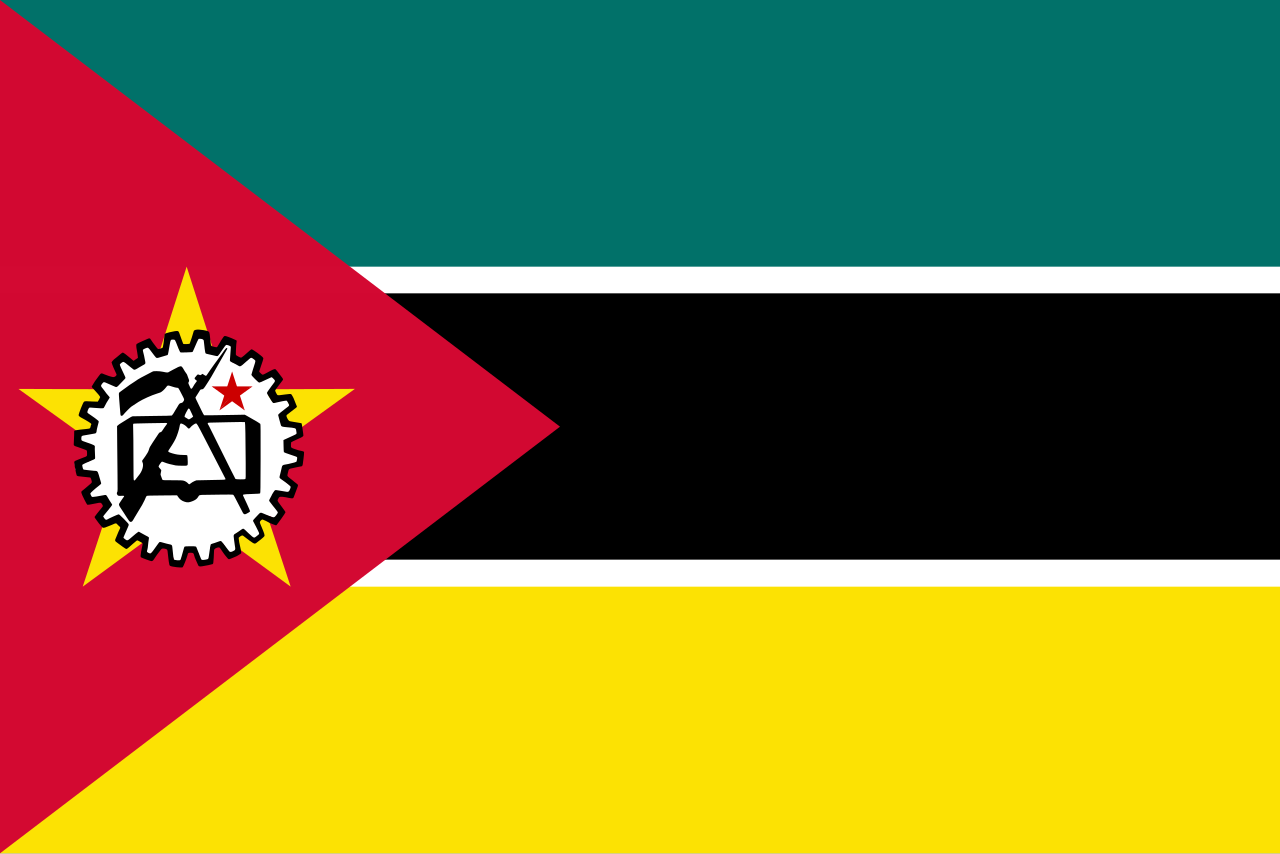
THE CULTURAL SIGNIFICANCE OF THE MOZAMBIQUE FLAG
For the people of Mozambique, the flag is more than just a national emblem; it is a profound representation of their history, struggles, and hopes for the future.
The Mozambique flag is prominently displayed during national celebrations, such as Independence Day on 25 June, and is a common sight at cultural festivals, political gatherings, and sporting events. Its vibrant colours and powerful symbols serve as a constant reminder to Mozambicans of their shared journey – from the fight for liberation to the ongoing pursuit of a brighter, more inclusive future.
CONCLUSION
The flag of Mozambique serves as a vivid representation of global decolonisation, African national independence, and the international communist movement. Although YPT currently does not offer tours to Mozambique, we can take you to Angola, a country that shares a common history of Portuguese colonialism, armed liberation struggles, and a socialist past with Mozambique.
Additionally, YPT can also take you to explore many fascinating countries across the vast and bountiful African continent. More information can be found on our African tours page.





